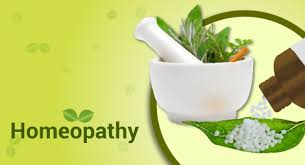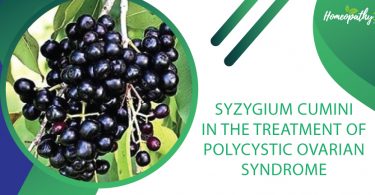Background: The association of intestinal microflora and the development of various chronic diseases, especially joint diseases have been established. Bowel nosodes are found to have a significant action upon the intestinal microflora as well as in the treatment of spine disorders including spondylosis.
Materials and Methods: A prospective observational study was carried out from 1993 to 1995. Forty patients presenting with signs and
symptoms of cervical spondylosis and fitting into the domain of prescription of bowel nosodes were included in the study. Bowel nosodes were prescribed either on the basis of totality of symptoms or based upon the relationship between the apparently indicated homeopathic medicines and the respective bowel nosodes or as intercurrent medicines. Along with these bowel nosodes, other homeopathic medicines and/or biochemic medicines were prescribed as and when required. Both centesimal and LM potencies of the bowel nosodes were used as per the need of cases.
Results: Three bowel nosodes namely Sycotic compound, Morgan pure and Morgan gaertener were used in this study, mostly asintercurrent medicines. 24 out of 40 patients showed marked improvements, 11 showed moderate improvements and 03 showed mild improvements whereas 02 did not improve. Sycotic compound was the most useful medicine; which was prescribed to 32 patients.
Introduction
In the early 20th century, it was believed that the intestinal toxaemia resulting from the fermentation of the non-lactose fermenting organisms led to the production of various chronic diseases. Bach and Wheeler prepared vaccines from pure cultures of nonlactose fermenting organisms of the bowel by isolating them from the patient’s stool. Each patient was given autogenous vaccine prepared from the organism found in his/her stool. The results of the vaccine in patients suffering from arthritis and other chronic obstinate diseases were favourable. It was suggested that the intestinal toxaemia resulting from non-lactose fermenting bacteria was virtually equivalent to the Hahnemann’s Psora [1]. The practice of potentizing vaccines and administering them orally as homeopathic medicines was followed and such medicines are called bowel nosodes.
Recent research studies have confirmed the association of the intestinal flora and the development of various chronic diseases, especially joint diseases. Alteration in the gut milieu not only causes intestinal disorders but also causes extra-intestinal disorders, such as atopy and arthritis [2].
Human intestinal microflora also has its own complexity and individuality and it has been shown that this is a confounding factor in determining the possible significance of individual organisms in the pathogenesis of spondyloarthritis [3].
Bach and Wheeler [4] along with Paterson [5] had established the role of bowel nosodes on the intestinal flora. They have recorded the use of such nosodes in the treatment of various chronic diseases including joint problems. With this background, this study was designed to evaluate the effect of bowel nosodes in cervical spondylosis.
Materials and Methods
Study Design and Set ings:
It was an open, prospective and observational study conducted from 1993 to 1995. All patients with cervical spondylosis attending the OPD/IPD of Dr.
A. C. Homoeopathic Medical College and Hospital, Bhubaneswar and private clinic of the author and his guide, Prof. K. K. Kar were screened.
Inclusion Criteria:
Patients suffering from pain in neck or referred pain in scapular region(s), shoulder(s), arm(s), fi nger(s) or stiff ness of neck or limitation of the neck movement and patients fitting into the domain of prescription of bowel nosodes were included in the trial.
Homeopathic Prescription:
All cases were recorded on a standard case recording format. After framing the totality of symptoms, these patients were categorized as per the plan laid down by Paterson [6]. Patients were broadly divided into two categories — new patients, who have not taken any homeopathic treatment and old patients, who were under homeopathic treatment since long but did not get the desired result. New patients were administered bowel nosodes if the totality of their symptoms indicated any one of the medicines. However, if the choice laid with a number of non-bowel homeopathic medicines, a search was made for their common
corresponding bowel nosodes and if available, such bowel nosodes were
prescribed. Old patients, who were not yielding, despite the administration of well selected homeopathic medicines, were given bowel nosodes as complementary medicines or as intercurrent medicines to remove miasmatic blocks. Here the choice of bowel nosode was guided by the study of clinical history of each patient; the remedies which had given favourable results were tabulated and compared with the list of
corresponding bowel nosodes. The nosode related to the maximum number of medicines was prescribed. The patients were divided into four categories:
Group I: Patients administered with bowel nosodes only
Group II: Patients administered with bowel nosodes along with homeopathic medicines
Group III: Patients administered with bowel nosodes along with biochemic
medicines
Group IV: Patients administered with bowel nosodes along with homeopathic and biochemic medicines
During the treatment, on-bowel medicines were also prescribed if patients’
symptomatology clearly called for such medicines. Such medicines
were chosen from the list of corresponding medicines related to the
bowel nosode(s) [6].
Potency and Dose Selection:
Bowel nosodes were administered in centesimal (30C, 200C, 1M) and LM potencies, whenever required. The potency, dosage and repetition schedule was determined as per homeopathic principles.
Follow Up:
All patients were followed up for maximum two years. For first two months, patients were followed up fortnightly; for next four months, they were followed up monthly; for next six months, every six weeks and thereafter, every two months.
Assessment Criteria:
Pre-defined parameters were determined to assess the improvement status of patients after treatment.
- Marked Improvement: Absenceof pain, stiffness, tingling sensation,
numbness in upper limbs,remarkable improvement in neck
movement and disappearance of localized tenderness by end of
study period. - Moderate Improvement: Absence of stiffness, tingling, numbness,
headache, vertigo, limitation of neck movements, localized tenderness and paraesthesia by the end of study period with periodic manifestation of neck pain of less intensity at longer intervals. - Mild Improvement: Absence of tingling sensation, numbness,
headache, vertigo, paraesthesia, localized tenderness by the end of
study period with periodic recurrence of pain, stiff ness and restriction of neck movements under normal physical stress and strain. - No Improvement: Status quo
Worse: Aggravation of subjective and objective symptoms
Drop-out: Patients did not turn up although advised
Observations and Results
Out of 150 screened patients, 40 were selected, who were prescribed bowel nosodes either as fi rst prescription or as inter-current medicines. Maximum patients (50%) enrolled in the
study were in the age group of 30-39 years. Urban males were found to be more affected. More patients (65%) engaged in sedentary work had this disease than those (10%) exposed to
hard manual work. Maximum patients (57.5%) reported insidious onset of symptoms. Although patients presented with varying symptomatology, yet neck pain, stiffness and limitation
of neck movement were common presentations (table 1).
Cervical spondylosis was diagnosed on the basis of signs, symptoms and radiological findings. All patients enrolled in the study were advised an X-ray of cervical spines, but due to financial constraints, this could not be done in 10 patients, who were diagnosed only on the basis of signs and symptoms. In remaining 30 patients, there was radiological evidence of cervical spondylosis. Out of 30 patients, 26 had narrowed inter-vertebral disc spaces along with osteophytes whereas 04 patients had only narrowed inter-vertebral disc spaces. In this study, 03 bowel nosodes namely Sycotic compound (n=32), Morgan pure (n=2)
and Morgan gaertner (n=6) were used.
Patients were categorized into 04 groups on the basis of medicines they received. Two patients received only bowel nosodes (one Morgan g. and the other Sycotic co.); 21 patients (17 patients
were on Sycotic co., 03 were on Morgan p. and 01 was on Morgan g.) received non-bowel homeopathic medicines, like Medo., Puls., Calc-c., Thuja, Rhus-t. etc., along with bowel nosodes; 03 patients (all on Sycotic co.) were given biochemic medicines like Calc-p.,
Calc-f. and Mag-p. along with bowel nosodes and 14 patients (11 patients on Sycotic co., 02 on Morgan g. and 01 on Morgan p.) received non-bowel homeopathic medicines as well as biochemic
medicines along with bowel nosodes. Groupwise analysis of the
status of the patients aft er the treatment is given in table 2.
In 02 patients, bowel nosodes were prescribed on the basis of similarity of symptoms; in 04 patients when totality of symptoms was covered by number of related medicines; in 12 patients when related medicines were prescribed previously and in 22 patients as inter-current medicines.
Improvement status of patients was analyzed and presented in table 3.
The basis of prescription of bowel nosodes is reflected in Fig 1.
In most cases (n=36), bowel nosodes in LM potencies were used, but in a few cases (n=4) centesimal potencies were also used. LM potencies were used in repeated doses (n=34) as well as in single doses (n=2). Only mild improvement was seen in cases
where single dose of the bowel nosode in LM potency was given, whereas better results were seen when LM potencies were given in repeated doses (22 patients showed marked improvement,
10 moderate improvement, 01 mild improvement whereas
01 showed no improvement).
Sycotic co. was prescribed in maximum number (n=32) of patients. It was prescribed as an intercurrent medicine in 17 patients. Out of all prescriptions of Sycotic co., it showed marked improvement in 19 patients (59.4%), moderate improvement in 08 patients (25%), mild improvement in 03 patients (9.4%) and no improvement in
02 patients (6.5%).
Discussion
In this study, it was found that males have a preponderance to develop cervical spondylosis. Similar results were observed by Kalichman et al7. It was found that 23 patients (57.5%) had insidious onset of symptoms whereas 17 patients (42.5%) had developed symptoms of cervical spondylosis suddenly.
These observations are not in congruence with Jain et al who reported that 96% patients had insidious onset of symptoms. [8[
Sycotic co. was prescribed in maximum number (n=32) of patients. It was prescribed on the basis of similarity of symptoms only in 02 patients whereas in remaining cases, it was prescribed when totality of symptoms of patients was covered by a number of the related medicines or when related medicines were prescribed previously or as an intercurrent medicines. It yielded marked improvement in 19 patients (59%), moderate improvement in 08 patients (35%) and mild improvement in 03 patients (9%) whereas only 02 patients did not improve.
In this study, the non-bowel homeopathic medicines and/or biochemic medicines were administered along with bowel nosodes, wherever required. The symptoms of the bowel nosodes are mostly ab usu in morbis (Knowledge obtained from the use of
medicines in diseases), so their available pictures do not reveal the real essence of these polychrest medicines. For this reason, the patients receiving bowel nosodes also required other homeopathic and/or biochemic medicines.
Out of 22 patients, to whom bowel nosodes were prescribed as inter-current or complementary medicines, marked improvement was seen in 13 patients (59%), moderate improvement in 06 patients (27%) and mild improvement in 02 patients (9%) whereas only 01 patient did not show any improvement.
Patients who were not responding to homeopathic medicines, in the beginning, started responding aft er giving the related bowel nosode(s); this supports that bowel nosodes have an upper hand over other non-bowel homeopathic medicines in removing
the miasmatic obstacles.
In this trial, 36 patients (90%) were prescribed medicines in LM potencies, whereas only 04 patients (10%) were prescribed medicines in centesimal potencies. Better results were seen in
patients receiving LM potencies.
The results of this study would encourage homeopathic professionals to conduct the proving of the bowel nosodes, according to the tenets of Homeopathy, so that their pathogenetic
powers can be ascertained and used as the basis of prescription.
This study had many limitations.
Firstly, the bowel nosodes used are not thoroughly proved, so their pathogenetic powers are not fully unfolded.
Secondly, the radiological diagnosis of all the patients could not be done because of financial constraints. For the same reason, follow-up status could not be substantiated radiologically.
Thirdly, because of the lack of clear cut guidelines for prescription of bowel nosodes, homeopathic and bio-chemic medicines were also prescribed in some situations.
Conclusion
The results of this study give an impetus to the use of bowel nosodes in cases of cervical spondylosis, especially as intercurent or complementary medicines. Better results can be expected
by prescribing them on the basis of totality of symptoms, if complete pictures of these bowel nosodes are obtained
through homeopathic pathogenetic trials.
Acknowledgement
I would like to extend my heartfelt gratitude to my teacher and guide of this research study, Prof. (Dr) Kamala Kanta Kar, former Principal-cum- Superintendent of Dr A. C. Homoeopathic
Medical College & Hospital, Bhubaneswar, for providing his case
records and guidance for the whole project. I am extremely thankful to Dr Alok Mishra, former Senior Research Fellow (Homoeopathy) of CCRH, who is presently pursuing P.G. study
at NIH, Kolkata for helping in drafting the manuscript of this article frommy dissertation.
References
1. Bach, E. A. Clinical Comparison between the Actions of Vaccines and Homoeopathic Remedies. British Homoeopathic Journal 1921; Vol. II: 21-44.
2. Hart, A. L. et al. The role of the Gut Flora in Health and Disease, and its Modifi cation as Therapy. Aliment Pharmacol Ther. 2002 Aug; 16 (8):1383-93.
3. S. Stebbings et al. Comparison of the Faecal Microflora of Patients with Ankylosing Spondylitis and Controls Using Molecular Methods of Analysis. Rheumatology 2002; 4:1395–1401.
4. Bach,E. and Wheeler, C. E. Chronic Disease: A Working Hypothesis. HK Lewis, London, 1925.
5. Paterson J. The Bowel Nosodes. The British Homoeopathic Journal. 1950, 11 (3): 1-4, 7-11.
6. Paterson John. The Role of the Bowel Flora in Chronic Diseases. British Homoeopathic Journal 1949; 39 (1): 3-26
7. Kalichman L, Guermazi A. Li L, Hunter D. J. Association Between Age, Sex, BMI and CT-Evaluated Spinal Degeneration Features. J Back Musculoskelet Rehabil. 2009; 22(4): 189-95.
8. Jain UK et al. Cervical Spondylosis – A Clinical study with Comparative Radiology in Indian Population. Indian Journal of Orthopaedics 1986.





